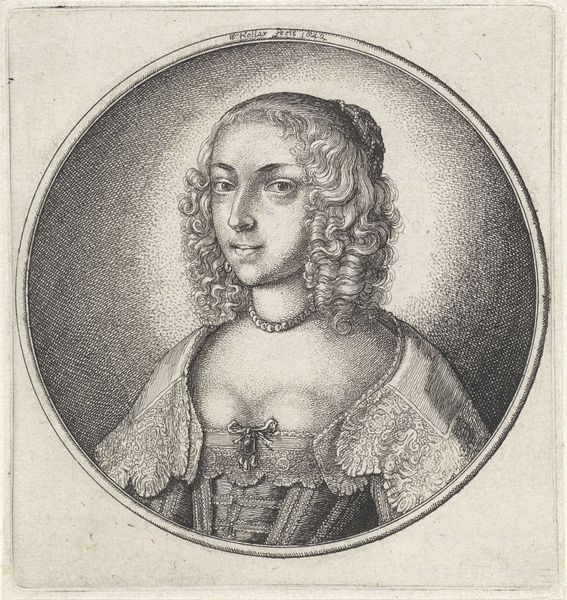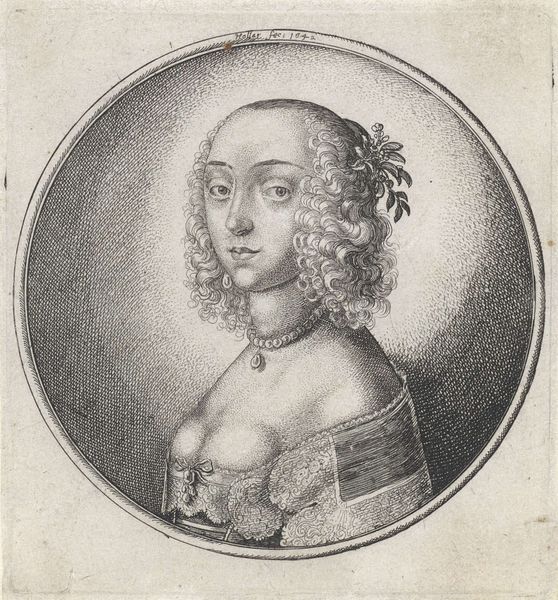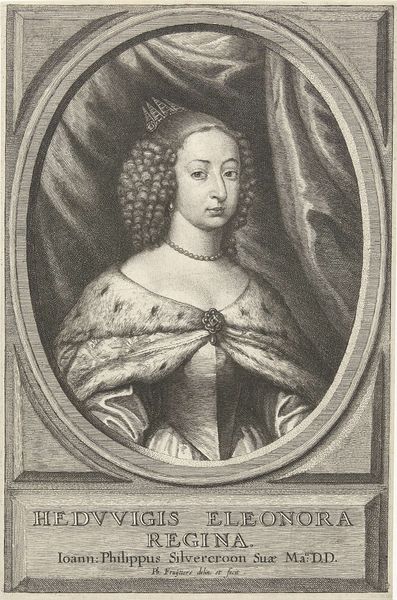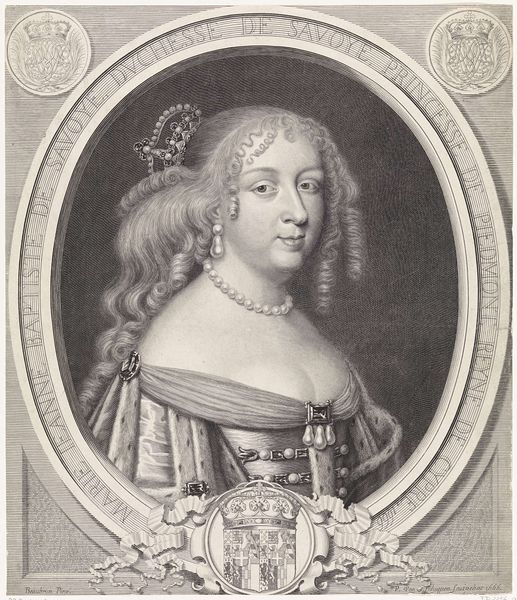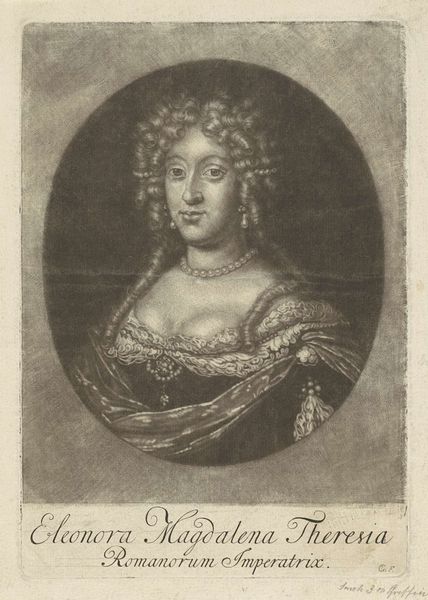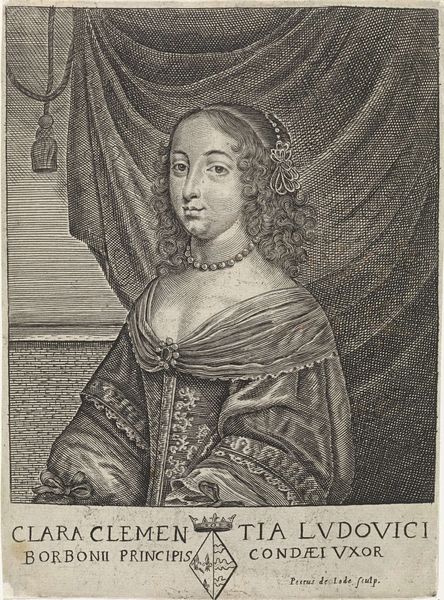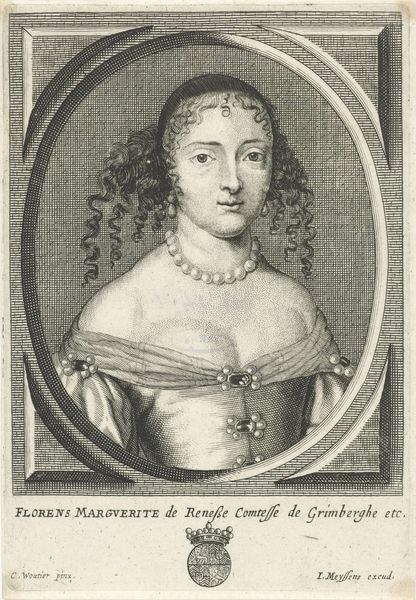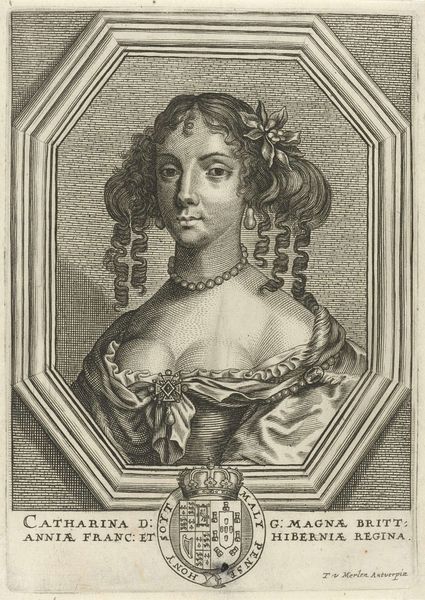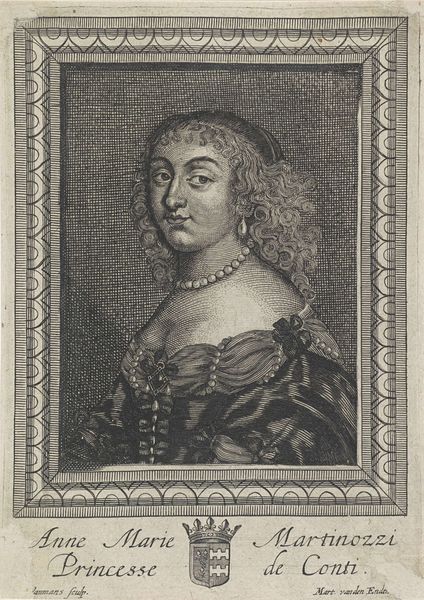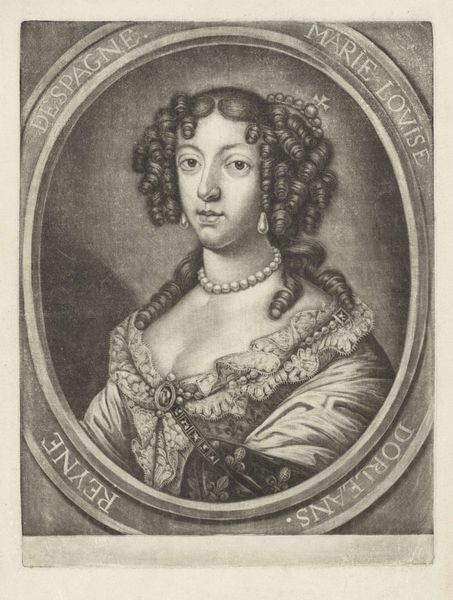
engraving
#
portrait
#
baroque
#
old engraving style
#
caricature
#
form
#
line
#
portrait drawing
#
history-painting
#
academic-art
#
engraving
#
realism
Dimensions: height 215 mm, width 149 mm
Copyright: Rijks Museum: Open Domain
Curator: This is a portrait of Maria Theresa of Austria, Queen of France and Navarre, crafted in the 17th century by V. Guigou. It's an engraving, quite characteristic of Baroque portraiture. Editor: There's a somewhat detached, austere feeling that radiates from this engraving, despite all the adornments of pearls and fur. It feels very much like a document of power. Curator: Absolutely. We see her positioned not simply as a woman but as a sovereign. Consider how portraiture was strategically used to communicate and solidify dynastic power, gender, and even racial ideology. Maria Theresa wasn't merely representing herself, she embodied the entire Hapsburg lineage. Editor: Let's think about the materials as power, too. The act of reproducing her image through engraving—essentially a form of early mass media— allowed for a far wider dissemination of her likeness than a painted portrait would have. That meant that notions about how a queen looks, how a queen holds herself became rapidly consumed and standardised. The material itself creates the illusion of omnipresence and solidity in ways a fleeting artwork in an aristocratic salon would not. Curator: Precisely, and further, consider that access was still mediated. How might its consumption have varied across class and gender, shaping social perception in unique ways? What would it mean for the working class to be able to recognize the Queen? It can create cohesion or it could create further division and understanding of the ruling class. Editor: What also strikes me is how this engraver approaches form and line. Each stroke seems incredibly precise. And yet, it feels like the engraver prioritized accuracy above flattering the Queen. The emphasis on line becomes crucial for transmitting ideas of power, as it conveys a specific artistic approach of meticulous control. It reinforces an understanding of not just what but *how* such images were made and perceived. Curator: So, looking at the cultural context surrounding the creation of Maria Theresa's portraits helps reveal much more than just surface-level appearance; it invites a critical understanding of how power is constructed and reinforced through visual means and by whom. Editor: It goes back to how these early modes of reproducible portraits allowed and maybe even fueled the notion of idealized representation tied so firmly to the distribution and labor of printing.
Comments
No comments
Be the first to comment and join the conversation on the ultimate creative platform.
